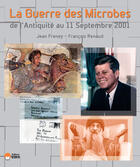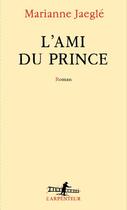-
Date de parution : 25/10/2011
-
Editeur :
Eska
-
EAN : 9782747215466
-
Série :
(-)
-
Support :
Papier
Résumé:
Those who are interested in bacteriology will find in this book explanations of the different fundamental concepts of bacteriology as well as the discovery of various bacteria. What fundamental roles did Richard Petri or Walther Hesse play in the big developments of our discipline? Did Antoni... Voir plus
Those who are interested in bacteriology will find in this book explanations of the different fundamental concepts of bacteriology as well as the discovery of various bacteria. What fundamental roles did Richard Petri or Walther Hesse play in the big developments of our discipline? Did Antoni van Leeuwenhoek really invent the microscope? How did Hans Joachim Christian Gram describe the staining which has been the basis of bacterial identification for so many years? What influences did Louis Pasteur and Robert Koch have on the great scientific minds of the time? Writing this kind of book was not easy; one of the major difficulties was to create limits on dates and between disciplines. Only by observing the tiny living world of microbes through the eye of a microscope could the pioneers of microbiology make connections between the microbes and disease. Thereafter, the theory of spontaneous generation was severely criticized, and after much controversy, was finally abandoned. Some of these microbes, the viruses, were not visible because they were still too small to be observed with the equipment of the time. Scientists nevertheless manipulated them without knowing, for example, by creating immunizations. The emergence of the field of immunology was directly tied to the development of microbiology, since immunization techniques were practiced equally on bacteria and viruses. Concerning the limits on dates, the only thing which is certain is that all those in this book are no longer with us; this criteria possibly guided our choices. So that the text is not too boring, we willingly included aspects of these men and women s personal lives. These stories might serve as further source for reflection. Some of the discoverers are not listed here even though they may have deserved their own entry. For others that are listed, some aspect of their work may not have been described. We welcome your comments, additions, and suggestions because even if this book is historical, it should continue to live and evolve. We are keeping records for future editions. We thank the French Society for Microbiology and the photo library at the Pasteur Institute for their help and illustration of this book. Teachers will find here supplemental material for their courses to introduce their students to the history of bacteriology and epistemology, sciences becoming more and more important in our time. We dedicate this book to our two friends, Willy Hansen and Claude Bollet, with whom we wrote many scientific and historical books. They were great friends and their absence is especially saddening. We think of them and their families and we are glad to have known them.
Donner votre avis















